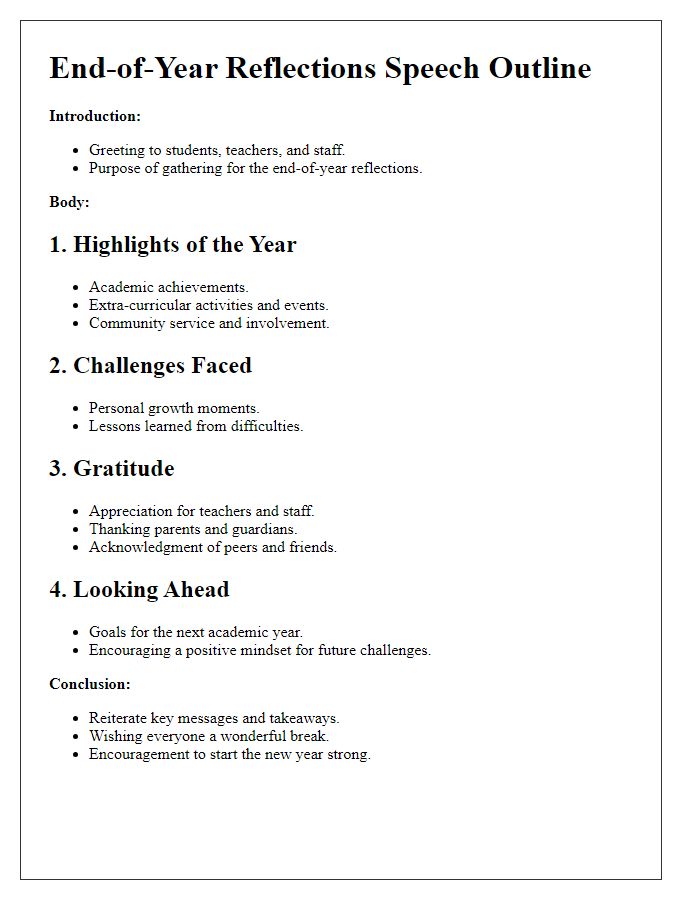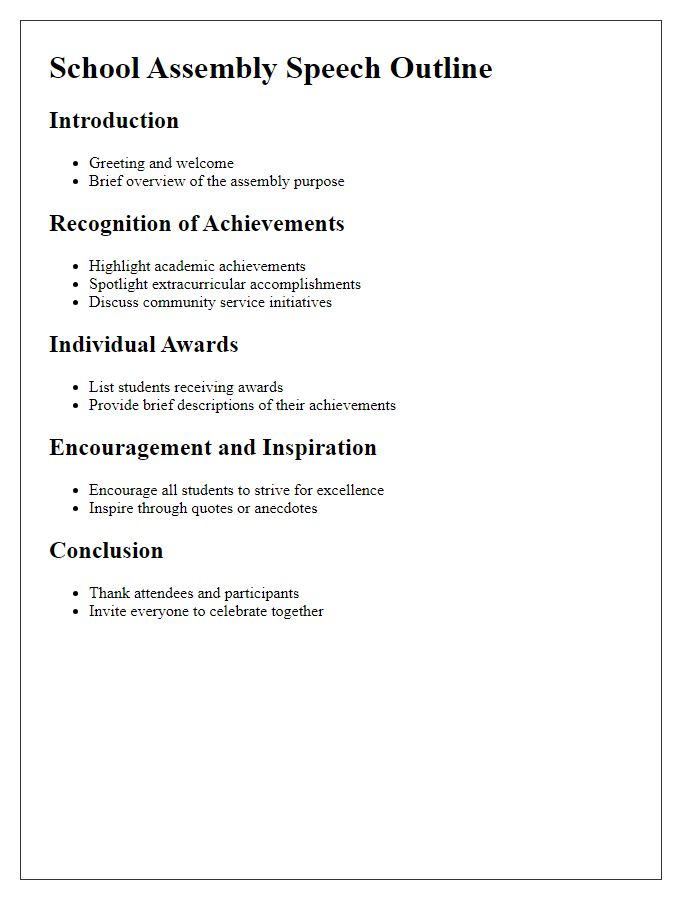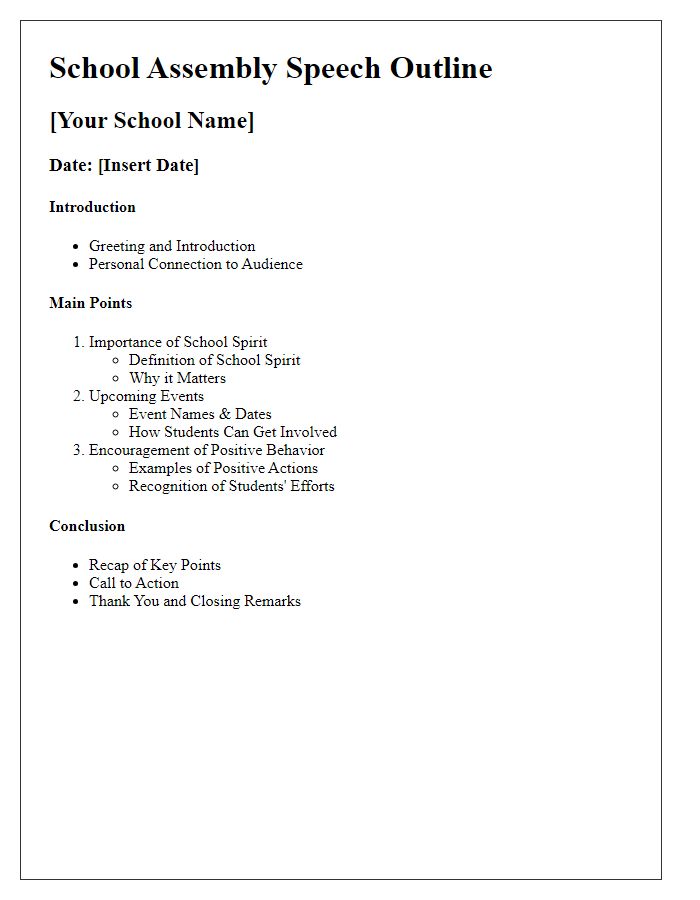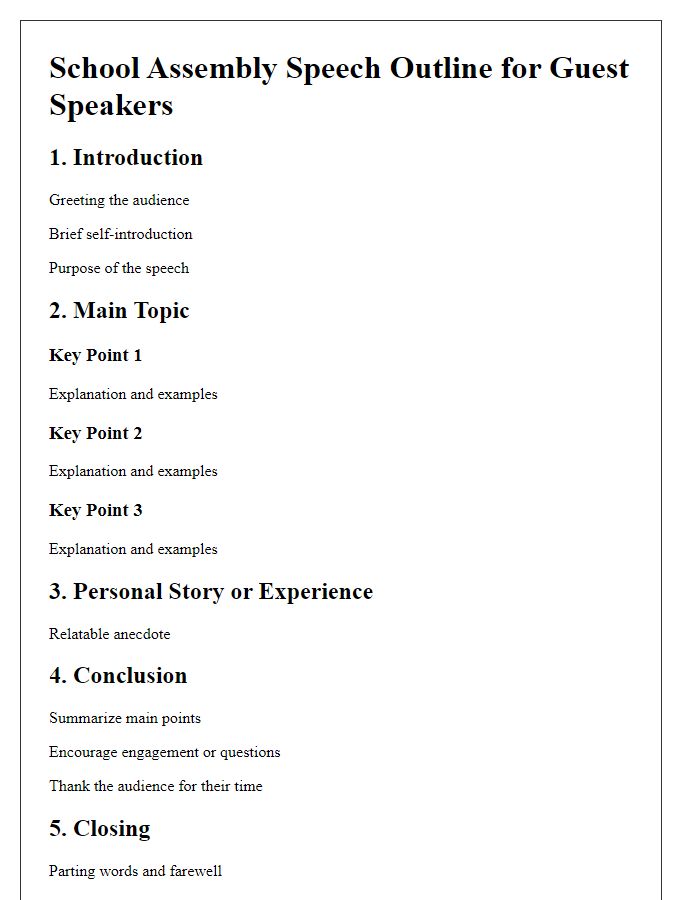Are you gearing up to address your school assembly but unsure where to start? Crafting an engaging speech can feel daunting, but it doesn't have to be! By following a simple outline, you can effectively share your message while capturing your audience's attention. Ready to unlock some tips and tricks for a memorable assembly speech? Let's dive in!

Greeting and Introduction
A school assembly speech should begin with a warm greeting, establishing a connection with the audience of students and faculty members present in the auditorium. An engaging introduction can involve a brief personal anecdote or an intriguing question that relates to the assembly's theme, capturing attention. Clearly state the purpose of the speech, whether it focuses on inspiring students about academic achievements, promoting an upcoming event like a charity fundraiser, or discussing critical issues such as mental health awareness. The introduction sets the tone, encouraging active listening and prompting reflection among the audience.
Key Theme or Topic
An engaging school assembly speech should focus on the key theme of community service, highlighting its importance in fostering social bonds and personal growth among students. Community service projects, such as food drives for local shelters or environmental clean-ups in regional parks, can significantly impact the well-being of the neighborhood and enhance students' understanding of social responsibility. Activities organized by student councils, including participation in volunteer days at organizations like Habitat for Humanity or the American Red Cross, promote teamwork and compassion. Furthermore, sharing stories of peers who have made a difference through their involvement can inspire others to engage in similar impactful initiatives. Recognizing outstanding contributions during the assembly can also motivate the entire student body to participate, fostering a culture of service and empathy.
Main Points and Supporting Details
Students often gather in school assemblies for sharing important information and celebrating achievements. These assemblies typically highlight core themes such as academic excellence, community service, and personal growth. For instance, the emphasis on academic excellence can be illustrated by recent achievements in standardized tests, showcasing improvements in student performance across subjects. Similarly, community service may be highlighted through projects like food drives or charity runs undertaken by various student organizations that reflect the collective spirit of empathy and support. Furthermore, personal growth can be emphasized with anecdotes of students overcoming challenges, emphasizing resilience and determination. Engaging visuals, such as photos from events or infographics showing year-to-year achievements, can bolster these points during the assembly. Each of these components is integral in fostering a sense of unity and motivation within the student body.
Call to Action or Conclusion
In a school assembly, the call to action serves as a pivotal moment to inspire students toward positive change and community involvement. A compelling conclusion reinforces the importance of unity and engagement among peers. Emphasizing key themes such as resilience, compassion, and collaboration can resonate deeply with young audiences. Encouraging participation in events like school clean-ups or charity fundraisers promotes a strong sense of responsibility and belonging. Utilizing personal anecdotes or stories from local leaders can create an emotional connection, driving home the message of empowerment. Closing with a motivational quote or a challenge encourages students to step outside their comfort zones and contribute to a brighter school environment and broader community.
Closing and Acknowledgments
During the school assembly, it's essential to express gratitude and provide a closing statement that reinforces the key messages delivered. Acknowledgment of contributions from students, teachers, and staff fosters a sense of community. Recognizing specific achievements, such as the recent science fair at Riverside High School or the successful charity drive for local shelters, highlights collective efforts. Encourage students to reflect on the themes discussed, which may include teamwork, perseverance, and respect, motivating them for future endeavors. Conclude with an inspiring quote from a notable figure, such as Nelson Mandela, to leave a lasting impression. Engaging the audience through applause or a call to action, such as participation in upcoming events, can enhance the sense of community and connection within the school.
Letter Template For School Assembly Speech Outline Samples
Letter template of school assembly speech outline for motivational talks

Letter template of school assembly speech outline for end-of-year reflections

Letter template of school assembly speech outline for theme-based presentations

Letter template of school assembly speech outline for showcasing student achievements

Letter template of school assembly speech outline for community announcements

Letter template of school assembly speech outline for fundraising events








Comments